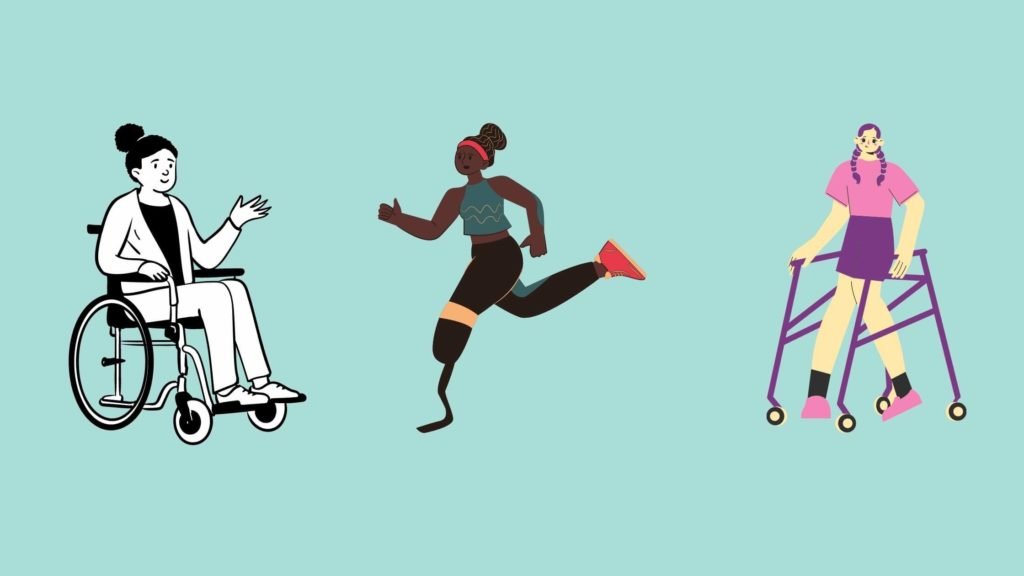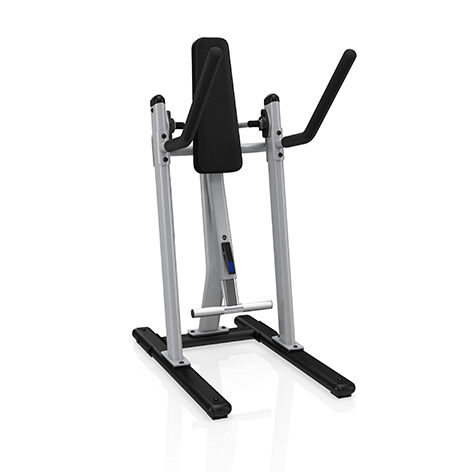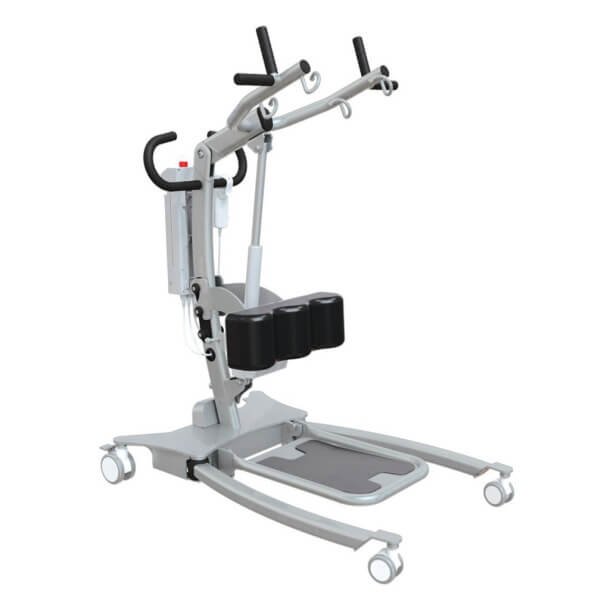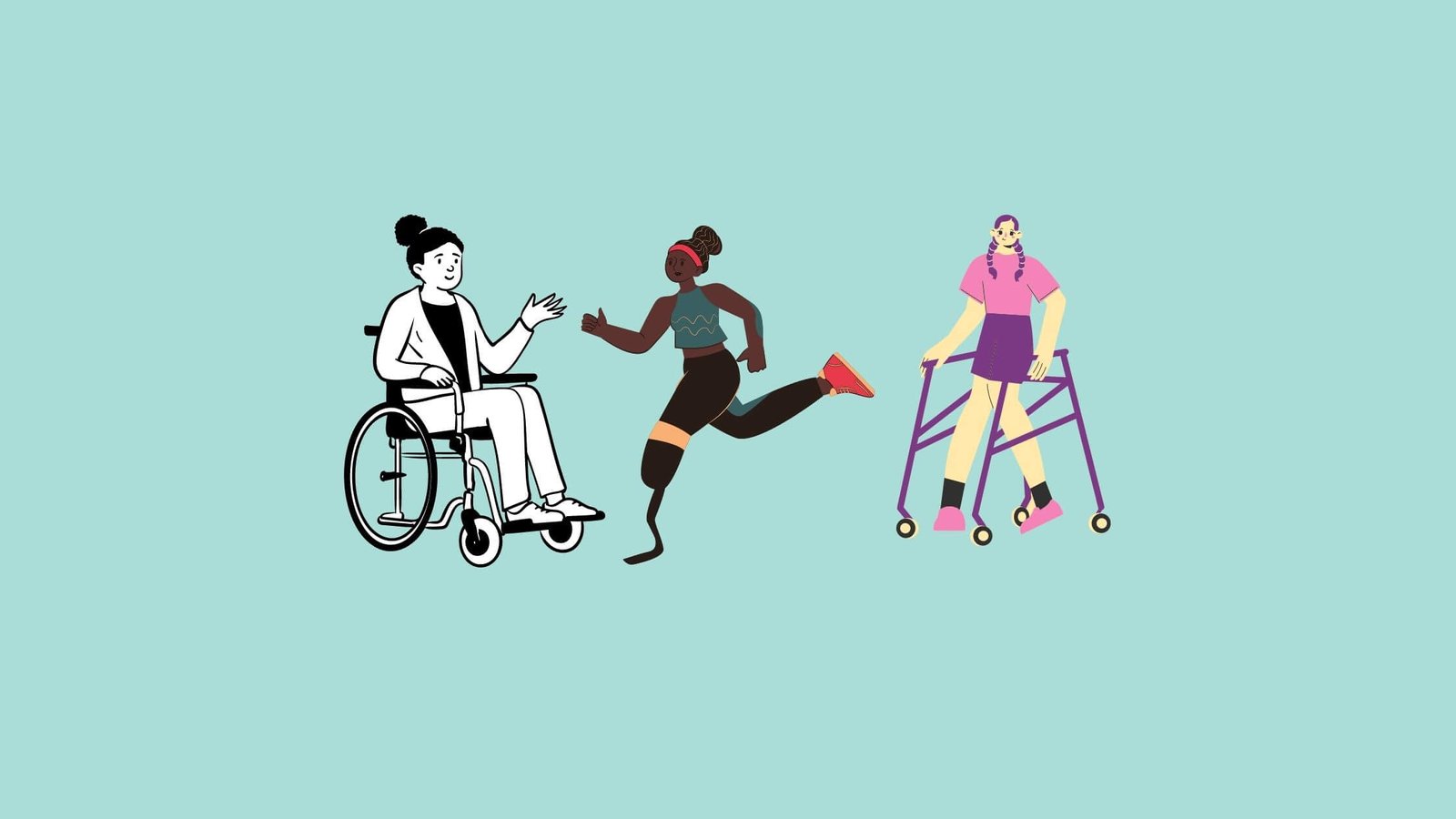Exercises For Disabled People 2021 – Exercising has many advantages, including improving physical fitness, sharpening mental capacity, remaining healthy, and decreasing weight. Regular exercise takes time and effort, but the benefits are well worth it. Muscles weaken as a result of sedentary behavior. Regular exercise is required to maintain normal heart and lung function.
Contents
- 1 Exercises For Disabled People – Can You Lose Weight With Simple Exercise In A Short Time?
- 2 Main Four Exercises For Disabled People
- 3 Pedal Exerciser
- 4 Suitable For –
- 5 Method Of Doing –
- 6 Seated Shoulder Press
- 7 Suitable For –
- 8 Method Of Using –
- 9 Reverse Crunches
- 10 Suitable For –
- 11 Method Of Doing –
- 12 Sit To Stand
- 13 Suitable For –
- 14 Method Of Doing –
- 15 Exercises For Disabled Person Final Verdict
- 16 People Also Ask
Exercises For Disabled People – Can You Lose Weight With Simple Exercise In A Short Time?
Exercise is compulsory if you have a disability. It helps to prevent not only the disability from worsening but also the onset of a secondary condition. Disability is connected to exercise abilities even in persons who are ambulatory. Exercise is a good remedy to promote cardiovascular health. People with sensory, physical, or mental issues are more likely to be obese, and exercise can help them lose weight.

Getting regular exercises for disabled people might be difficult. Maintaining a level of fitness can be incredibly challenging when it is difficult to move around, or when strength, stamina, or dexterity issues. Regular exercise, on the other hand, is essential for good health. Fortunately, there is workout equipment available for disabled persons to help them in this. The purpose of this article is to look at the equipment that is able to assist disabled individuals in exercising on a regular basis.
Main Four Exercises For Disabled People
For disabled people, physical activity has various health benefits. It improves mood, enhances stamina, and aids in the treatment of chronic conditions like type 2 diabetes, heart disease, and cancer. Even if you have restricted mobility, you can choose from a number of activities to suit your needs. Here are 4 such exercises and their method of action for disabled people:
Pedal Exerciser
Pedal exercisers are devices that help physically challenged people stay active. They can benefit from these devices in a variety of ways, including reducing muscle discomfort and stiffness and enhancing motor functions. It allows you to exercise without exerting excessive force on your body. This device includes a pedaling mechanism similar to stationary cycles and is easier to use. Most of the pedal exercisers can be operated with the feet.
Suitable For –
Anyone who intends to improve their health and fitness can use pedal exercisers. It’s also helpful for regaining strength and mobility after an injury or surgical procedure like a knee replacement or shoulder reconstruction. But for people with disabilities, this equipment aids in promoting aerobic exercise and build fitness. Disabled people can use it to exercise their arms or legs.
Method Of Doing –
The pedal exerciser is designed for people who have any disabilities or who are confined to a wheelchair. For leg workouts, the pedal exerciser can be placed on the floor, and for arm exercises, it can be placed on a tabletop. Here are the steps for using the exerciser.
- Place the tension control knob in the pedal cylinder on the pedal exerciser’s top. To tighten, turn the tension control knob clockwise.
- Tighten the tension control knob to the appropriate resistance level. Increase resistance by turning the tension control knob clockwise, and decrease resistance by turning it counter clockwise.
- Once seated, place the pedal exerciser in front of you on a flat, level floor surface in a comfortable position. For arm exercise, sit in a chair with the pedal floor exerciser positioned in front of you on a stable tabletop surface. Maintain a straight back.
- Underneath the straps, place each foot on the pedals. The straps assist in keeping the feet in place. Start pedaling. You may work for different muscle groups by pedaling forward or backward. For arm exercise, grasp each pedal with both hands and start cycling while avoiding leaning forward.

Seated Shoulder Press
The seated shoulder press machine is an exercise equipment that can help you work on your shoulders. The shoulder press machine is a piece of fixed resistance equipment that allows you to push above while seated. The deltoids and triceps are the main moving muscles in this exercise. As a stabilizer, it truly activates your entire body.
Suitable For –
For the disabled, the shoulder press is extremely advantageous. This is due to the fact that they lack upper-body strength, suffer from shoulder pain, and have mobility limitations. This will protect your shoulders from injury, improve your posture, enhance your balance, and provide you with the majority of the benefits of strength training all in one exercise.
Method Of Using –
To begin, sit on the seat and ensure that it is adjusted to your height. The bars should be at shoulder level. With your feet flat on the floor, your back against the pad, and your knees bent at a straight angle, you should be sat comfortably.
With an upright posture (overhand) grasp, hold the bars that are projecting out in front of you. Bend your elbows. Raise the weight above your head and over your shoulders. The machine will determine the movement pattern.
At the peak, pause, but don’t lock out the elbows. Return to the starting position in a calm and controlled manner, maintaining the weight’s tension at the bottom until the next round. Do not allow the weight to return to its original position.

Reverse Crunches
Reverse crunches, also known as reverse ab crunches, are a variation of the typical abdominal exercise in which the muscular activity is performed by the legs and hips while the back is supported on the floor entirely or partially.
The neck and back are less stressed when doing reverse crunches. Reverse crunches are good for conditioning, endurance, weight loss, side fat, fat loss, and strengthening. They are the most effective for abs, quadriceps, and core, hips, legs, lower body, upper legs, and waist.
Suitable For –
Reverse Crunches are suitable for those who suffer from multiple sclerosis, Parkinson’s disease, mild cerebral palsy, obesity, fibromyalgia, peripheral neuropathy, stroke, rheumatoid arthritis, motor neuron diseases, partial lower body paralysis, etc.
Method Of Doing –
Sit with your feet in front of you and lie on your back on the floor or on a mat, slightly bent your knees and hands behind your head. Slowly lower your body to the ground while maintaining your core engaged.
Raise your legs and bend your knees to a 90-degree angle. Maintain a distance between your chin and your chest, looking diagonal towards the ceiling. Knees should be pulled in toward the chest and held for 2 seconds.
Then return your legs to their starting position slowly. Repeat it for 10 to 15 minutes. This workout will help you strengthen your abdominal muscles. If you are having problems, hold your knees or thighs with your hands and support yourself.

Sit To Stand
The sit-to-stand exercise helps you maintain or increase your mobility and independence by strengthening your lower body. For persons who have lower-body ailments or disabilities, sit-to-stand exercise is ideal. This exercise can help with posture, back pain, and body sores produced by sitting in the same position for extended periods of time. It is a functional workout that improves leg, core, and back muscles for a specific movement.
Suitable For –
The sit-to-stand exercise is beneficial to anyone looking for wheelchair workouts, physical rehabilitation activities, or limited mobility exercises. It is an effective workout for people with physical disabilities such as cerebral palsy, motor abnormalities, obesity, fibromyalgia, rheumatoid arthritis, and traumas.
Method Of Doing –
Sit towards the chair’s front edge. Bend your knees and set your feet shoulder-width apart on the floor. Lightly place your hands on each side of the seat. Maintain as much straightness in your back and neck as possible, with your chest slightly forward. Slowly take a deep breath in. Slightly move your weight to the front of your feet by leaning forward.
As you slowly rise up, exhale. Take a complete breath in and out while standing. Inhale deeply as you sit. To regulate your lowering as much as possible, tighten your core and abdominal muscles. Take a deep breath and gently exhale. This exercise should be done ten to fifteen times. After a minute of relaxation, do it again.

Exercises For Disabled Person Final Verdict
Exercise helps not only the physical development of the body but also the mental and intellectual growth and thereby maintaining good health. If you have a disability, you should engage in any physical activity on a regular basis to reap the physical and emotional benefits. Exercise, like a well-balanced diet, fosters healthy life. Everyone, regardless of age or disability, should engage in some form of physical activity.
Because persons with impairments or long-term injuries are more likely to live sedentary lifestyles, it is even more necessary for you to exercise regularly. At the very least, do your best to engage in regular physical activity and avoid inactivity whenever feasible.
As mentioned above in the exercises for disabled people Physical activity has the potential to help us all overcome obstacles and enhance our lives. All of these benefits can be added to your life by making a few modest changes to your daily habits to include exercise as part of your usual routine.
People Also Ask
You May Also Read – Best Compact Home Gyms Of All Time
